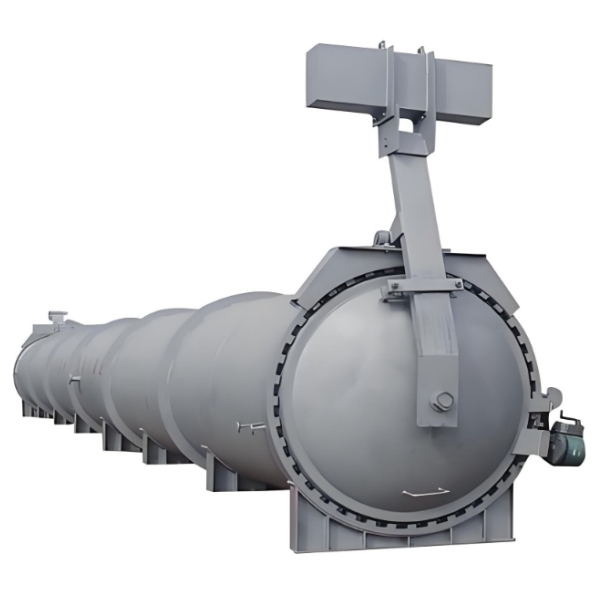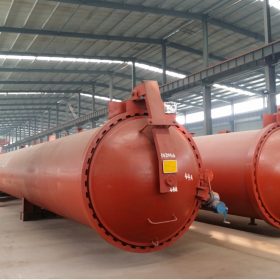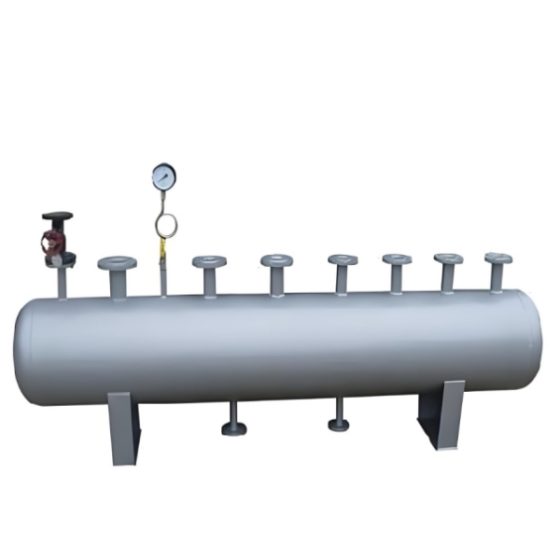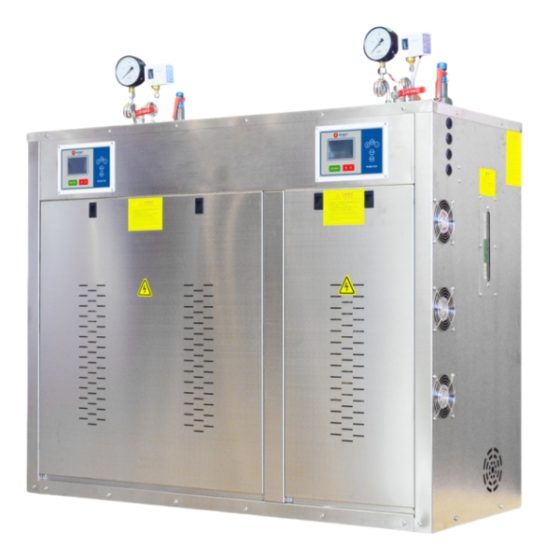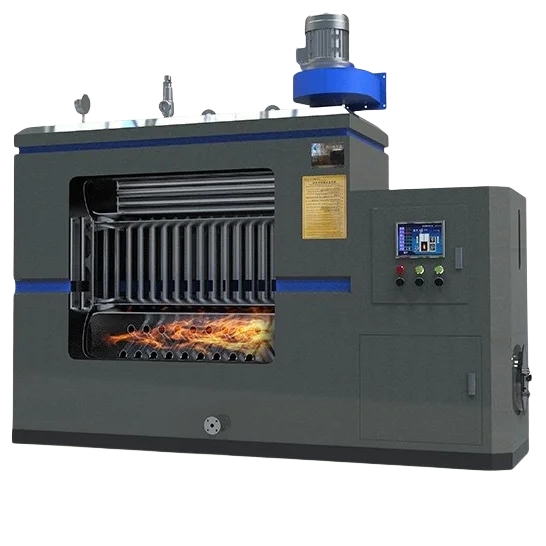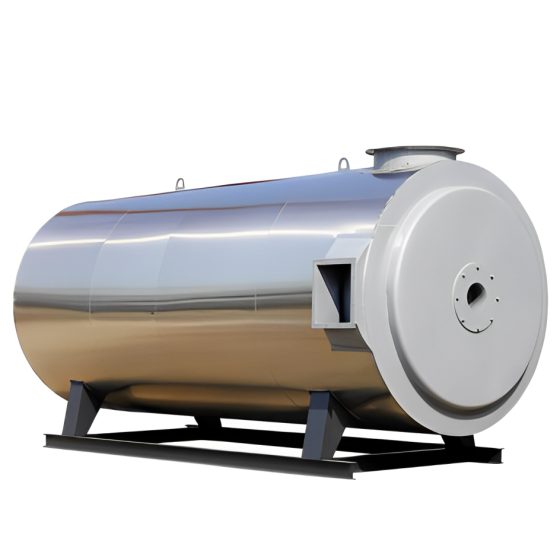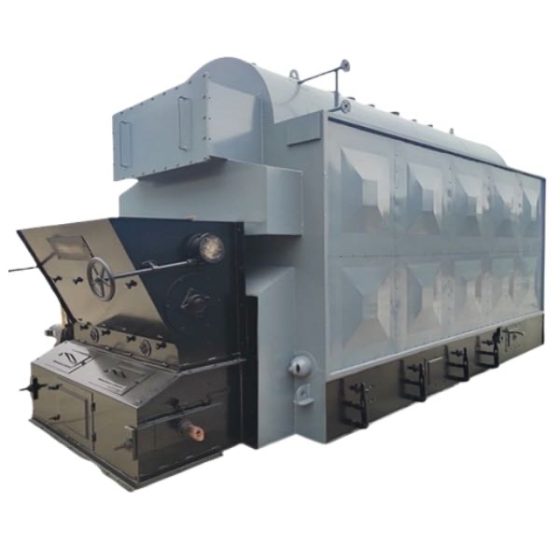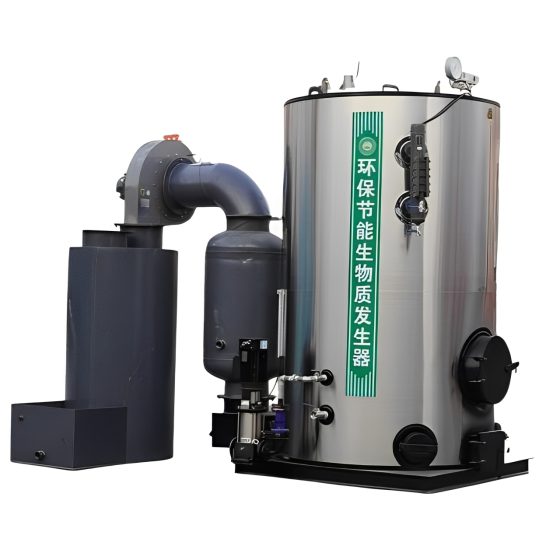The autoclave is a large pressure vessel with a relatively large volume, composed of the autoclave body, autoclave cover, support, valves, instruments and safety accessories, with steel rails and steam distribution pipes laid inside. The lid of the pot is formed by pressing Q345R special steel plate for pressure vessels, and the pot body is formed by rolling Q345R special steel plate for pressure vessels. The flanges of the pot lid and pot body are integrally forged from 16Mn, and after numerical control processing, they are integrally heat-treated to eliminate stress and welding stress. And carry out secondary fine processing to fully ensure that the reactor door opens and closes easily and flexibly. It is equipped with complete manual and automatic safety interlock devices to ensure the safe operation and handling of the autoclave.
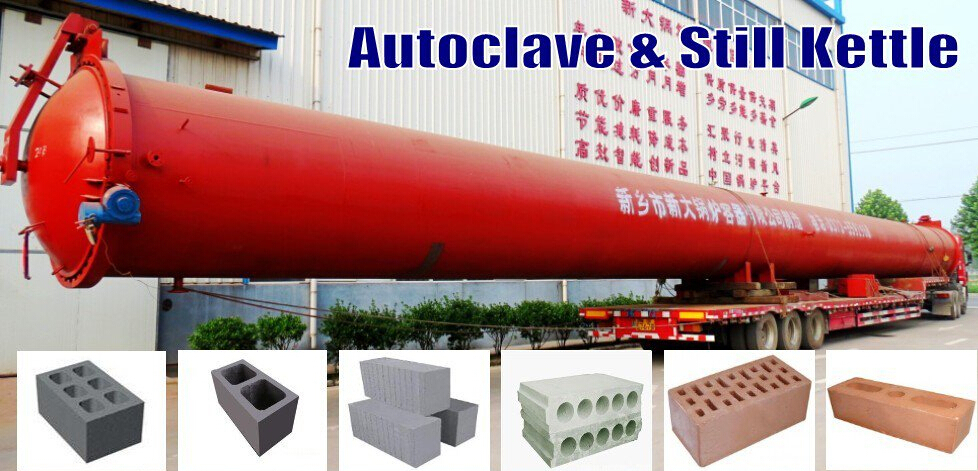
Main Feature
1.The adoption of high-quality components ensures the stable performance of the autoclave and extends its service life.
2. The material is made of high-strength steel, ensuring the long-term stable operation of the equipment.
2. It features a high degree of automation and is equipped with an automatic pressure control system, which not only saves labor costs but also enhances the safety of pressure vessels.
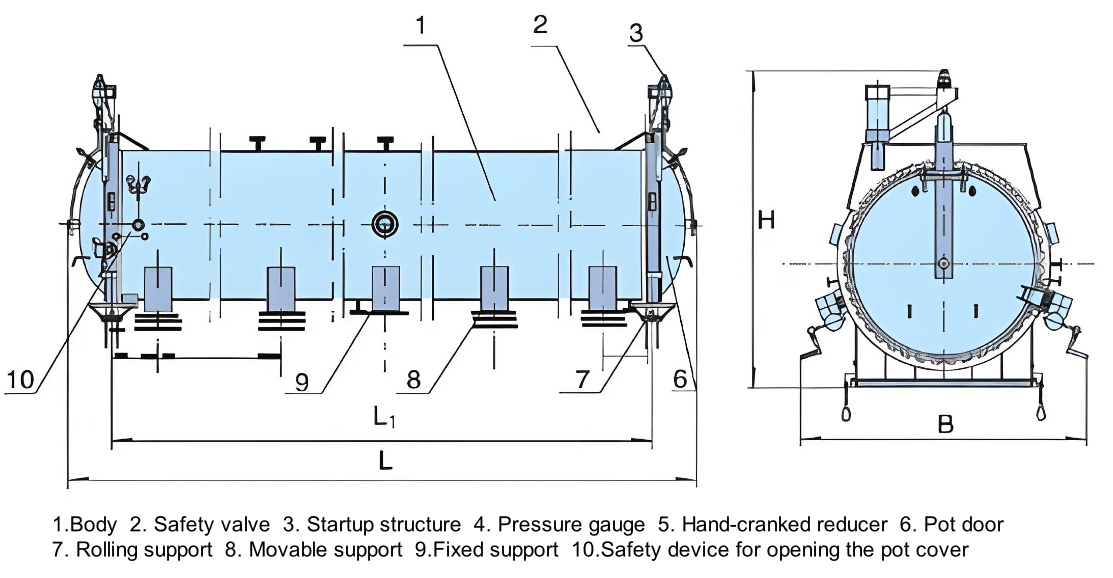
Technical Parameters
| Model | Diameter(m) | Efficient Length(m) | Design Pressure(Mpa) | Design Temperature(°C) | Working Medium | Length×Width×Height (mm) |
Weight(ton) |
| 1.65×21 | 1.6 | 21 | 1.1 | 187 | Saturation steam | 2165*2619*2600 | 18.7 |
| 2×31 | 2 | 31 | 1.4 | 197 | 22300*2730*3300 | 30 | |
| 2.85×26 | 2.85 | 26 | 1.6 | 197 | 22760*3280*4560 | 62 | |
| Note: Parameter is for reference only, if any changes should follow the actual drawing. | |||||||
Application
Autoclaves have a wide range of applications and are widely used in the autoclave curing of aerated concrete blocks, pipe piles, ash-sand bricks, coal ash bricks, micro-porous calcium silicate boards, new lightweight wall materials, insulation asbestos boards, high-strength gypsum and other building materials. The hydrothermal reaction of Ca0-sio2 and H2O is completed inside the autoclave. It is also widely applicable to rubber products, wood drying and anti-corrosion treatment, heavy metal smelting, refractory brick oil impregnation and coal seepage, glass steam curing, high-pressure treatment of chemical fiber products, high-temperature and high-pressure treatment of food, pulp cooking, cable vulcanization, fishing net shaping, as well as in the chemical, pharmaceutical and aviation industries. The production of pressure-based curing processes in industries such as natural industries, insulation materials, textile industries, and military industries.


